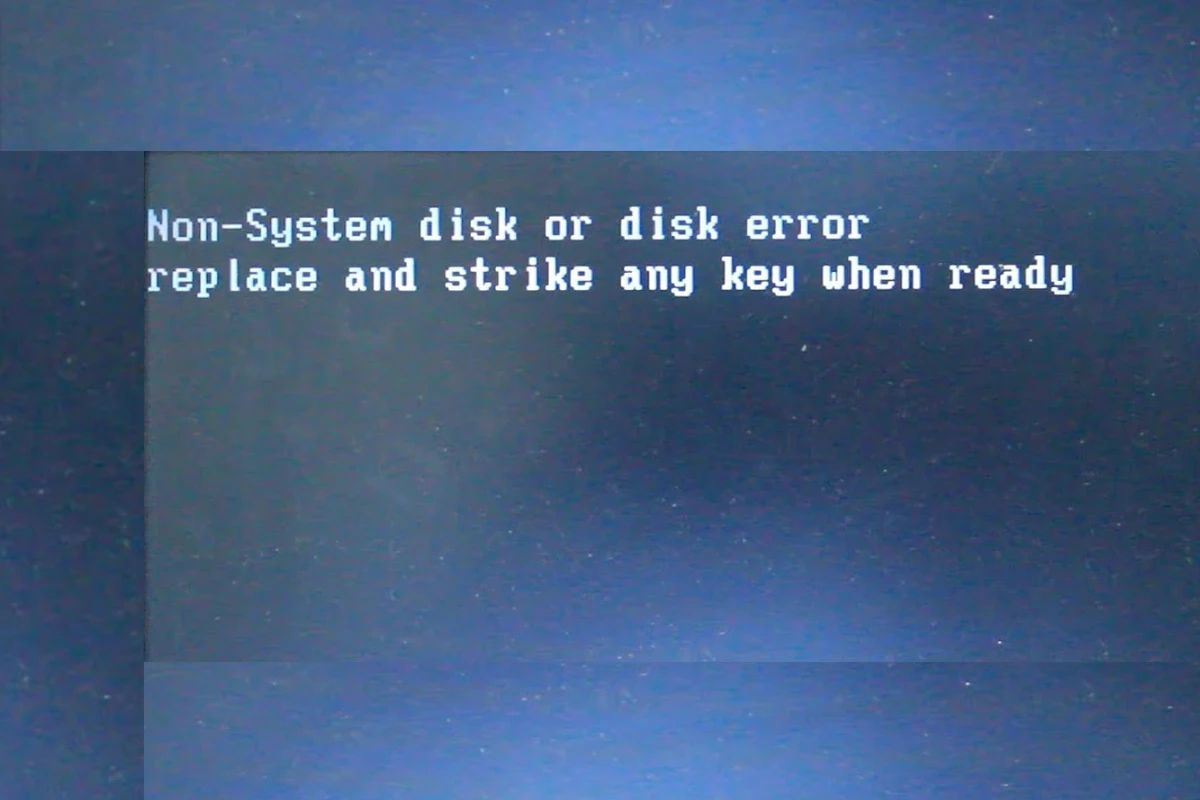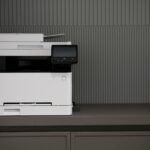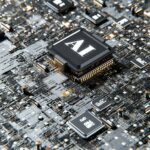Encountering a “Non-system disk or disk error” message can be frustrating. This error often appears when a computer can’t find the necessary files to start up properly. The fix usually involves checking the boot order in BIOS settings or making sure a bootable disk is inserted.
The error message typically shows up on a black screen during startup. It may prevent Windows from loading, leaving users stuck. Common causes include incorrect boot device settings, loose hard drive connections, or corrupted system files.
Several solutions exist for this problem. They range from simple fixes like removing non-bootable USB drives to more complex steps like repairing the Master Boot Record. The right approach depends on the specific cause of the error.
| Common Causes | Potential Solutions |
|---|---|
| Incorrect boot order | Adjust BIOS settings |
| Loose hard drive | Check connections |
| Corrupted system files | Repair or reinstall Windows |
| Non-bootable media | Remove USB drives |
Decoding the “Non-System Disk or Disk Error” Message
This dreaded error message usually pops up when your computer can’t find a valid operating system to boot from. It can be a panic-inducing moment, but don’t worry, here’s a breakdown of what it means and how to troubleshoot it:
Understanding the Error
When you start your computer, it looks for a bootable disk (usually your hard drive or SSD) that contains the operating system files. If it can’t find a suitable disk or encounters errors reading the disk, you’ll get the “Non-System Disk or Disk Error” message.
Common Causes
- Incorrect boot order: Your computer’s BIOS (Basic Input/Output System) might be configured to boot from the wrong device (e.g., a USB drive or CD/DVD drive).
- Loose or faulty connections: The cables connecting your hard drive or SSD to the motherboard might be loose or damaged.
- Corrupted boot files: The files required to start your operating system might be corrupted or missing.
- Hard drive or SSD failure: Your hard drive or SSD might be failing or have bad sectors.
- External media: A USB drive, CD, or DVD might be inserted, and your computer is trying to boot from it.
Troubleshooting Steps
- Check for external media: Remove any USB drives, CDs, or DVDs from your computer.
- Check boot order:
- Access BIOS: Restart your computer and press the designated key during startup to enter BIOS (usually Del, F2, or Esc).
- Boot sequence: Go to the “Boot” or “Boot Order” section and ensure your hard drive or SSD is listed as the first boot device.
- Save and exit: Save the changes and exit BIOS.
- Check connections:
- Power off: Turn off your computer and unplug it from the power outlet.
- Open the case: If you’re comfortable doing so, open your computer case.
- Inspect connections: Check the data and power cables connected to your hard drive or SSD. Ensure they are securely plugged in.
- Run Startup Repair (Windows):
- Windows installation media: You’ll need a Windows installation disc or USB drive.
- Boot from media: Insert the media and restart your computer. Boot from the installation media.
- Startup Repair: Select “Repair your computer” and then choose “Troubleshoot” > “Advanced options” > “Startup Repair.”
- Check for hard drive errors:
- Windows CHKDSK: Open Command Prompt as administrator and type
chkdsk /f /rand press Enter. This will check for and attempt to repair disk errors. - Other diagnostic tools: You can also use third-party hard drive diagnostic tools to check for errors.
- Windows CHKDSK: Open Command Prompt as administrator and type
Advanced Steps (if comfortable)
- Test with a different drive: If you suspect your hard drive or SSD is failing, try connecting a different drive and installing the operating system on it.
- Reinstall the operating system: As a last resort, you can try reinstalling your operating system. This will erase all data on your hard drive, so back up important files first.
Seeking Professional Help
If you’re uncomfortable with any of these steps or the problem persists, it’s best to seek professional help from a computer technician. They can diagnose the issue and recommend the best course of action.
Understanding the Error Message
The “Non-System Disk or Disk Error” message appears when a computer cannot boot properly. This error often stems from hardware issues or incorrect system settings.
Interpreting ‘Non-System Disk or Disk Error’
This error indicates that the computer cannot find a bootable operating system. It typically shows up as a black screen with white text. The message prompts users to replace the disk and press any key to continue.
Common variations include:
- “Non-System Disk or Disk Error”
- “Replace and strike any key when ready”
- “Boot device not found”
These messages mean the same thing: the computer can’t locate the necessary files to start Windows or another operating system.
Common Causes of Disk Errors
Several factors can trigger this error:
- Incorrect boot order in BIOS
- Faulty hard drive connection
- Corrupted boot sector
- Damaged hard drive
A faulty boot order is often the culprit. The computer may try to boot from a non-system disk like a USB drive or DVD.
Hardware issues can also cause this error. A loose or damaged SATA cable might prevent the system from detecting the hard drive. In some cases, the hard drive may be connected to the wrong SATA port on the motherboard.
| Cause | Description | Fix |
|---|---|---|
| Incorrect boot order | BIOS tries to boot from wrong device | Change boot order in BIOS |
| Faulty connection | Loose or damaged SATA cable | Check and replace cables |
| Corrupted boot sector | Boot files damaged | Repair boot sector |
| Hard drive failure | Physical damage to drive | Replace hard drive |
Troubleshooting Steps
When faced with a non-system disk or disk error, several troubleshooting steps can resolve the issue. These range from basic checks to more advanced solutions.
Initial Checks and Quick Fixes
Start by removing any external storage devices like USB drives or DVDs from your computer. This simple step often resolves the error.
Next, check for loose connections. Ensure all cables connecting your hard drive are secure. A loose connection can cause the system to fail to recognize the boot drive.
Verify the boot order in your BIOS settings. Make sure the correct hard drive is set as the primary boot device. Incorrect boot order is a common cause of this error.
If these steps don’t work, try running a startup repair. This built-in Windows tool can fix many boot-related issues automatically.
Advanced Solutions
For persistent errors, more advanced troubleshooting may be necessary. Run the chkdsk utility to scan for and repair disk errors. Open Command Prompt and type “chkdsk /f /r” to start the process.
Consider repairing the Master Boot Record (MBR). Use the “bootrec /fixmbr” command in the Windows Recovery Environment to attempt this fix.
If software solutions fail, hardware issues may be to blame. Test your hard drive for physical damage. Replace the hard drive if necessary.
| Troubleshooting Step | Difficulty | Potential Fix |
|---|---|---|
| Remove external devices | Easy | Resolves boot order conflicts |
| Check connections | Easy | Ensures proper drive detection |
| Verify BIOS boot order | Moderate | Corrects startup sequence |
| Run chkdsk | Advanced | Repairs file system errors |
| Repair MBR | Advanced | Fixes boot sector issues |
| Replace hard drive | Advanced | Addresses hardware failure |
Data Recovery and Protection
Safeguarding digital information and retrieving lost data are crucial skills in the modern computing landscape. Proper backup strategies and recovery techniques can mitigate the impact of system failures or accidental deletions.
Preventing Data Loss
Regular backups are key to avoiding data loss. Users should implement a 3-2-1 backup strategy:
- 3 copies of data
- 2 different storage types
- 1 off-site backup
Cloud storage offers an easy off-site solution. External hard drives or SSDs provide local backups.
Automated backup software simplifies the process. Windows includes built-in tools like File History. Third-party options offer more features.
Disk checks can catch issues early. Run chkdsk regularly to scan for and fix file system errors.
Protect against power surges with a UPS (uninterruptible power supply). This prevents data corruption from sudden shutdowns.
| Backup Type | Pros | Cons |
|---|---|---|
| Cloud | Accessible anywhere | Requires internet |
| External drive | Fast local access | Can be lost/damaged |
| Network storage | Centralized | Needs local network |
Recovering Lost Data
When prevention fails, recovery becomes essential. Start with built-in Windows tools like System Restore for system files. For user data, check the Recycle Bin first.
File recovery software can scan drives for deleted files. Options range from free tools to professional-grade solutions. These work best when used quickly after data loss.
For physical drive failures, professional services may be necessary. They can often retrieve data from corrupted hard drives in clean room environments.
SSDs require specialized recovery techniques. Their wear-leveling and TRIM features can make data recovery more challenging.
If standard methods fail, forensic data recovery might help. This advanced technique can retrieve data from formatted or severely damaged drives.
Reinstallation and System Restoration
Resolving a non-system disk error often requires reinstalling the operating system or using system restoration tools. These methods can help recover a non-bootable system or fix corrupted system files.
Reinstalling the Operating System
Reinstalling the operating system is a powerful solution for severe disk errors. Begin by creating a bootable Windows installation media using a USB flash drive or DVD. Insert the media and restart the computer, then press the appropriate key to enter the boot menu.
Select the installation media as the boot device. Follow the on-screen prompts to start the Windows installation process. Choose the option to perform a clean install, which will erase the existing data on the drive.
During installation, pay attention to partitioning. Create a new partition for the operating system if needed. After installation, Windows will create the necessary system partitions automatically.
Setting Up a Bootable Recovery Drive
A bootable recovery drive provides tools to fix system issues without a full reinstall. To create one, use a USB drive with at least 16GB capacity. On a working Windows PC, search for “Create a recovery drive” in the Start menu.
Follow the wizard to create the recovery drive. This process copies essential system files and recovery tools to the USB drive. Once created, the drive can be used to boot a non-functioning PC.
To use the recovery drive, insert it into the affected computer and boot from it. Access advanced repair options to run tools like Startup Repair or System Restore. These can often fix boot-related issues without data loss.
| Recovery Method | Pros | Cons |
|---|---|---|
| OS Reinstall | Fixes most issues | Data loss |
| Recovery Drive | Preserves data | May not fix severe problems |
Both methods can address MBR issues and restore bootable partitions. Choose based on the severity of the disk error and data preservation needs.
Frequently Asked Questions
The ‘Non-system disk or disk error’ can occur due to various reasons and affect different operating systems. This error often indicates issues with boot settings, hardware connections, or system files.
What steps can resolve the ‘Non-system disk or disk error’ on an HP laptop?
Check the boot order in BIOS settings. Ensure the hard drive is set as the first boot device. Verify all cables are properly connected to the hard drive. Run a disk check utility to scan for and fix file system errors.
If these steps don’t work, try booting from a recovery disk or USB drive. Use repair tools to fix boot-related issues. In some cases, reinstalling the operating system may be necessary.
How can one troubleshoot the ‘Non-system disk or disk error’ after installing a new operating system such as Ubuntu?
Verify the installation media is not left in the drive. Remove any USB drives or external storage devices. Check if the GRUB bootloader was installed correctly.
If the error persists, boot into a live Ubuntu environment. Use disk repair tools to fix any partition or file system issues. Reinstall GRUB if needed.
What are common causes for the ‘Non-system disk or disk error’ message on Windows 7 and how can these be fixed?
Common causes include incorrect boot order, loose cable connections, and corrupted system files. To fix, enter BIOS and set the correct boot drive. Check and reseat all drive cables.
Run the Windows built-in disk check utility to repair file system errors. If these steps fail, use a Windows 7 installation disc to perform a system repair.
In what ways can a ‘Non-system disk or disk error’ be addressed on a machine running Windows XP?
For Windows XP, start by checking the boot order in BIOS. Ensure the hard drive is detected. If not, check cable connections and drive health. Use the Recovery Console from the Windows XP installation CD to run ‘chkdsk’ and ‘fixboot’ commands.
If these steps don’t work, consider replacing the hard drive. Data recovery may be needed if the drive has failed.
Why might a computer display the message ‘Non-system disk or disk error’ and what does this imply about the system’s state?
This error implies the computer cannot find a bootable operating system. It may occur if the system is trying to boot from a non-bootable device or if the boot files are corrupted.
The error can also indicate hardware issues like a failing hard drive or loose connections. It suggests the system is unable to start normally and requires troubleshooting.
What are the methods for bypassing the ‘repairing disk error’ to resolve the ‘Non-system disk or disk error’ on a laptop?
To bypass the disk repair process, try booting into Safe Mode. From there, run the ‘chkdsk’ command manually. If Safe Mode is inaccessible, use a bootable recovery drive to access Command Prompt.
Run ‘chkdsk /f /r’ to force a disk check and repair. If these steps fail, consider using third-party disk repair tools or seeking professional help.
| Error Cause | Quick Fix |
|---|---|
| Incorrect boot order | Change boot priority in BIOS |
| Loose cable | Reseat hard drive connections |
| Corrupted system files | Run ‘chkdsk’ or system file checker |
| Failed hard drive | Replace the drive |
| Non-bootable media in drive | Remove CDs, DVDs, or USB drives |






